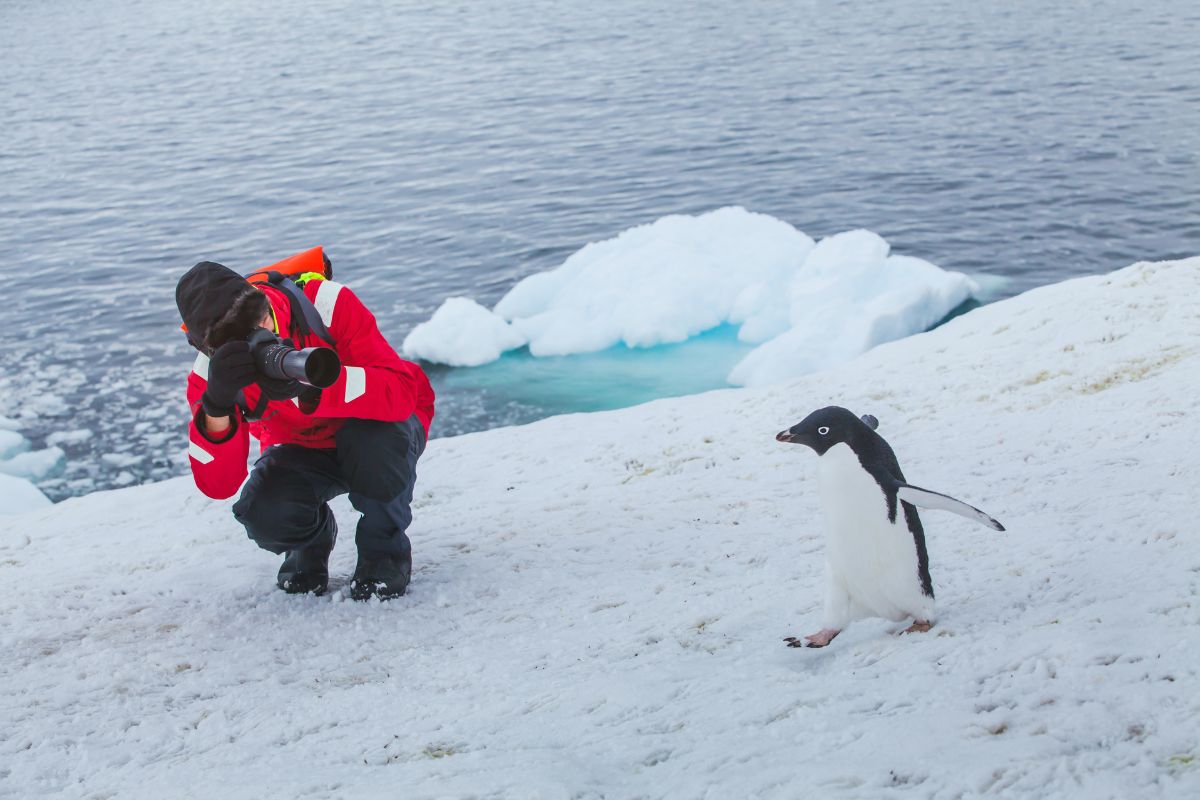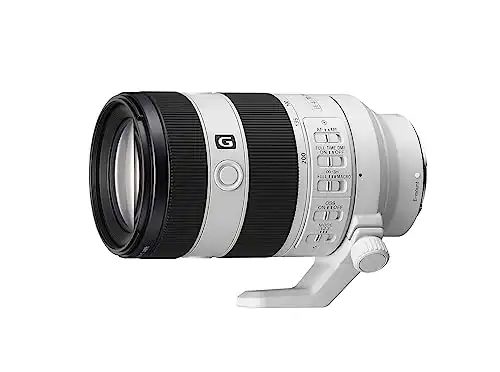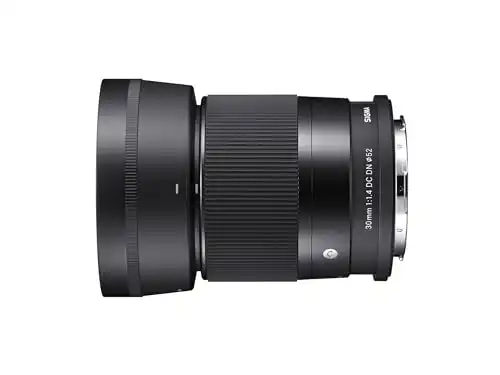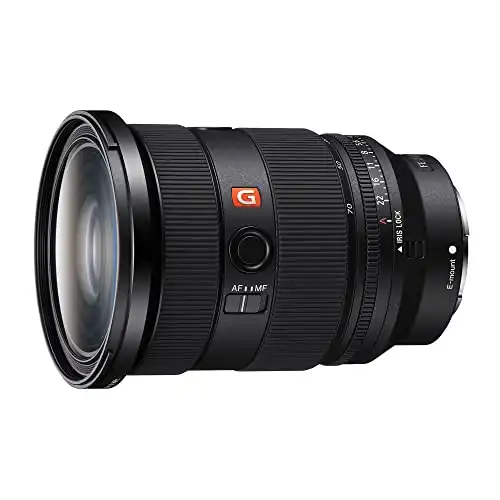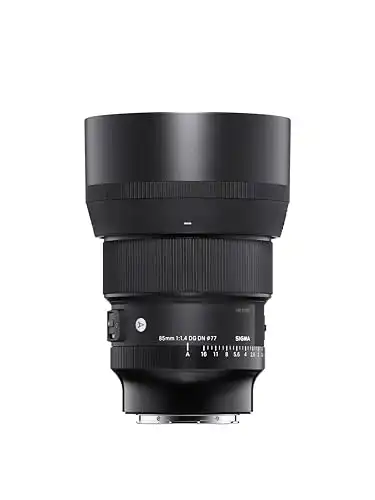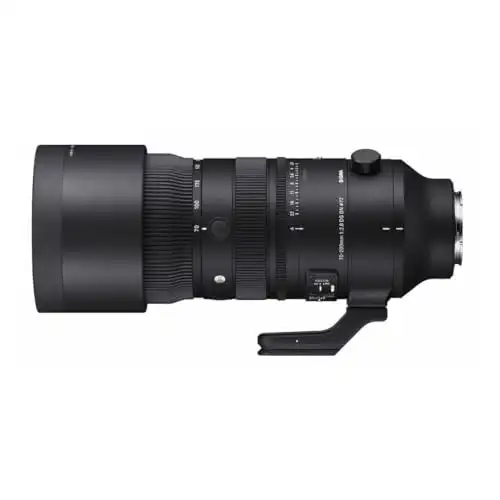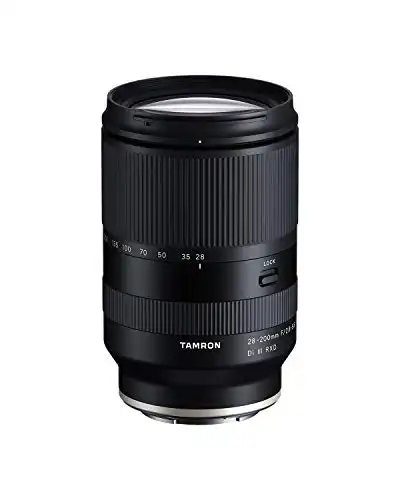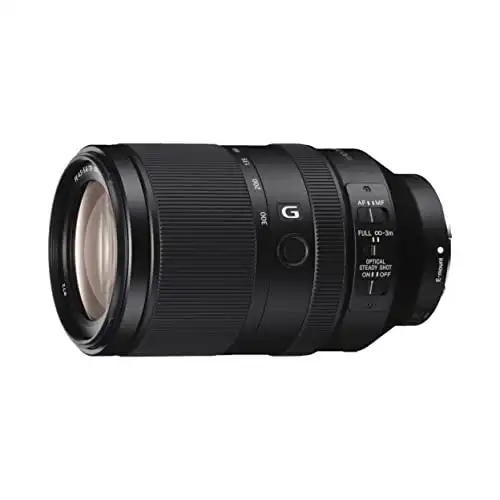If you're an avid wildlife photographer looking to capture elusive creatures in their natural habitat with your Sony A6000, imagine the precision and clarity you could achieve with the right lens.
The lens you choose can make all the difference in bringing those breathtaking moments to life on your camera sensor.
But how do you navigate the sea of options out there to find the best fit for your needs? Let's explore the top wildlife lenses for Sony A6000 that could elevate your photography game.
Table of Contents
ToggleKey Takeaways
- Choose a lens with a suitable focal length for wildlife photography needs.
- Opt for wider apertures like f/2.8 for better low-light performance.
- Prioritize lenses with image stabilization to counteract camera shake.
- Select a lens with fast and precise autofocus for capturing wildlife moments effectively.
The 7 Best Wildlife Lenses for Sony A6000 [Detailed Review]
Looking to elevate your wildlife photography game with your Sony A6000? Get ready to discover the top 7 wildlife lenses that will take your shots to the next level.
From the versatile Sony FE 70-200mm F4 Macro G OSS II to the budget-friendly Sigma 30mm F1.4 Contemporary DC DN lens, there's a perfect option for every photographer's needs.
Dive into our detailed review to find the ideal lens that suits your style and budget.
1. Sony FE 70-200mm F4 Macro G OSS II (Best Overall)
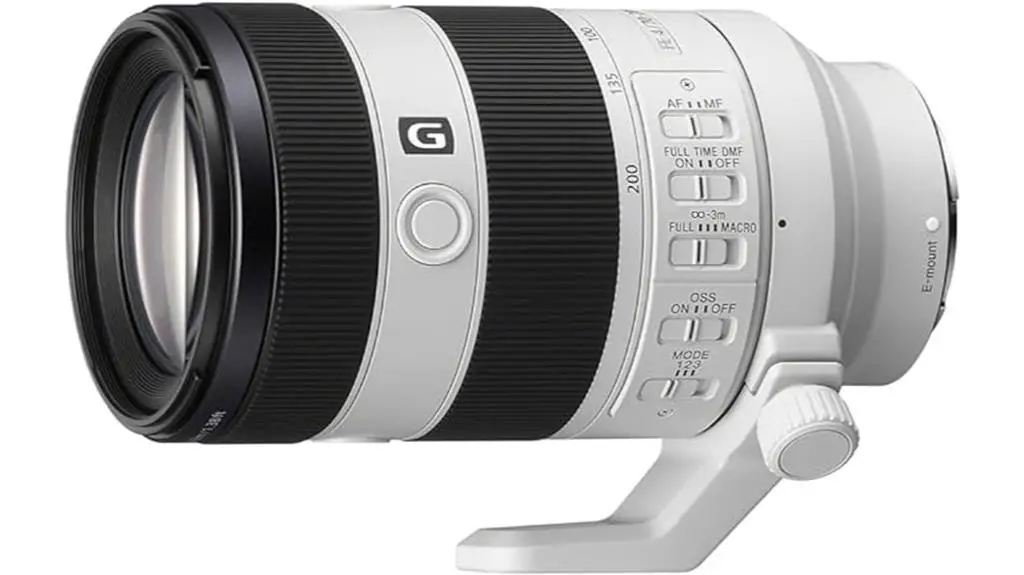
For wildlife photographers seeking exceptional image quality and versatile macro capabilities, the Sony FE 70-200mm F4 Macro G OSS II stands out as the top choice among the 7 best wildlife lenses for Sony A6000.
This compact and lightweight telephoto zoom lens offers half-macro capability across its zoom range, ensuring detailed close-up shots of wildlife. With advanced optical technology, including aspherical and ED elements, chromatic aberration is effectively reduced, resulting in outstanding corner-to-corner resolution and contrast.
The lens's circular 9-blade aperture mechanism enhances the bokeh for beautiful background blur. Additionally, its compatibility with Sony's teleconverters further extends its focal length and macro capabilities, making it a versatile option for capturing wildlife in various settings.
Users have praised its sharpness, compact design, and impressive macro performance, solidifying its position as a top choice for wildlife photography with the Sony A6000.
Best For: Wildlife photographers seeking exceptional image quality and versatile macro capabilities in a compact and lightweight telephoto zoom lens.
- Half-macro capability throughout the zoom range.
- Advanced optical technology for outstanding resolution and contrast.
- Compatibility with Sony's teleconverters for increased focal length and macro capabilities.
- Some users may prefer other Sony lenses for superior image quality.
2. Sigma 30mm F1.4 Contemporary DC DN Lens for Sony (Best Budget)
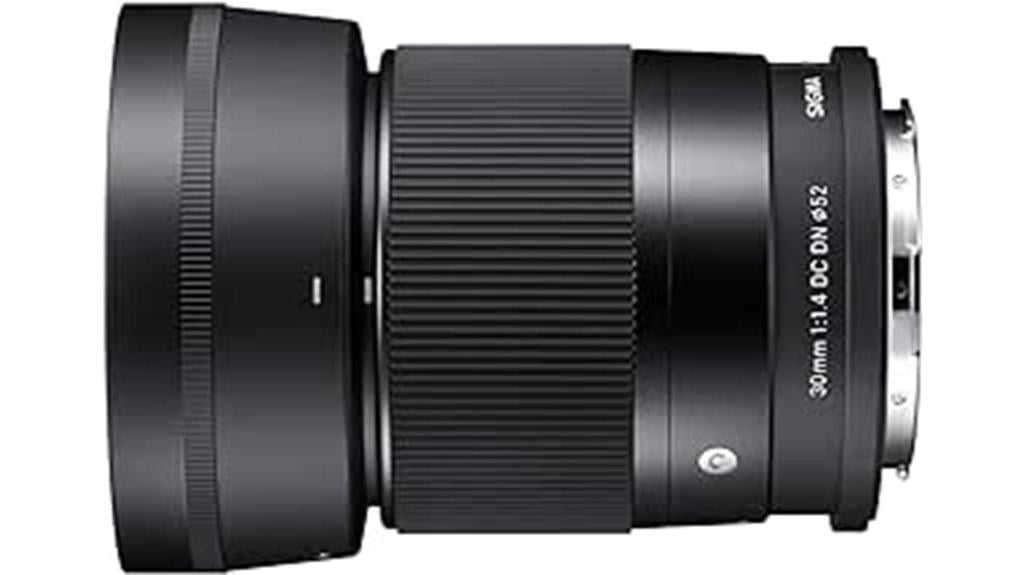
With its fast f/1.4 aperture and exceptional image quality, the Sigma 30mm F1.4 Contemporary DC DN Lens for Sony E Black emerges as a top choice for wildlife photographers using the Sony A6000.
This high-performance prime lens is specifically designed for APS-C Mirrorless cameras, featuring a Sony E-mount, nine rounded aperture blades, and a stepping ring motor for smooth and quiet autofocus.
Despite its compact size, this lens delivers excellent sharpness and resolution, with well-controlled lens aberrations. Users have praised its fast and accurate autofocus, solid build quality, and portability.
While it may lack stabilization and have a somewhat plastic feel, the Sigma 30mm F1.4 offers great value for its price point, making it an ideal option for photographers looking to achieve professional image quality on a budget.
Best For: Street photographers seeking exceptional image quality and affordability.
- Low Price
- Excellent image quality at all apertures
- Distortion and lens aberrations are well controlled
- Compact design and lightweight for easy portability.
- Fast F1.4 aperture for capturing decisive moments.
- Slightly small aperture at f/2.8 for the size of the lens
- Designed for APS-C Mirrorless cameras only.
3. Sony FE 24-70mm F2.8 GM II Lens (Best Premium Option)
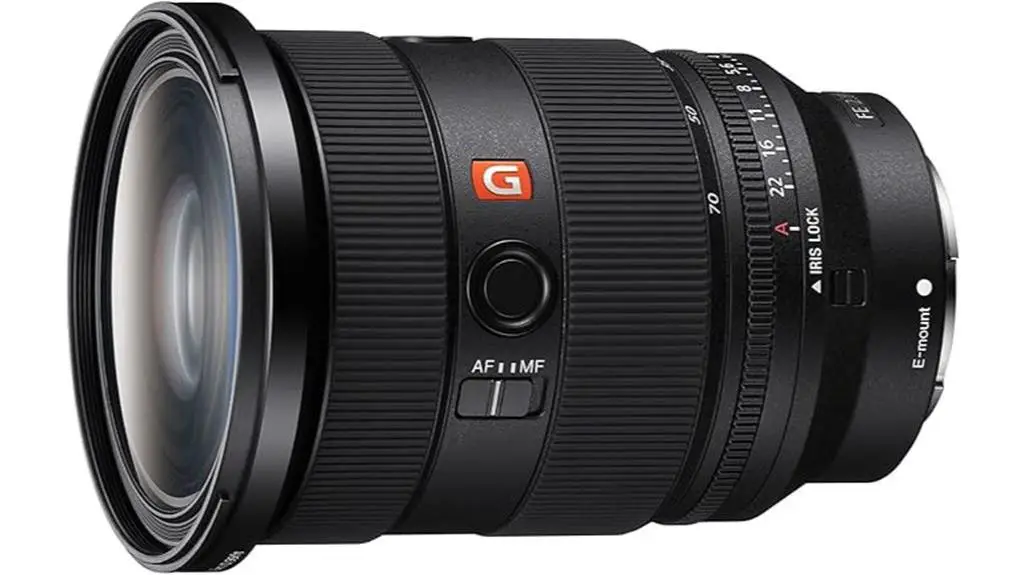
The Sony FE 24-70mm F2.8 GM II Lens stands out as the top choice for wildlife photographers seeking unparalleled image quality and versatility with the Sony A6000 camera.
This lens, known as the world's lightest full-frame F2.8 constant aperture standard zoom lens, is a powerhouse of features. With G Master resolution and exquisite bokeh, it incorporates advanced elements like two XA elements, two ED glass elements, and two Super ED glass elements for sharp, clear images.
Weighing just 24.6 oz, it boasts a compact design while offering exceptional performance. Equipped with four XD Linear Motors, this lens ensures fast, precise, and quiet autofocus, making it suitable for capturing wildlife in both stills and videos.
Best For: Avid travelers seeking exceptional image quality and versatility.
- Impressive performance in various photography scenarios.
- Lightweight and easy to carry at only 24.6 oz.
- Advanced AF performance for both still and movie cameras.
- World's lightest Full Frame F2.8 constant aperture Standard Zoom lens.
- G Master resolution and exquisite bokeh with evolved AF performance.
- Compact design with exceptional performance, ideal for capturing wildlife.
- Quite pricey.
4. Sigma 85mm F1.4 DG DN for Sony (Best Optical Performance)
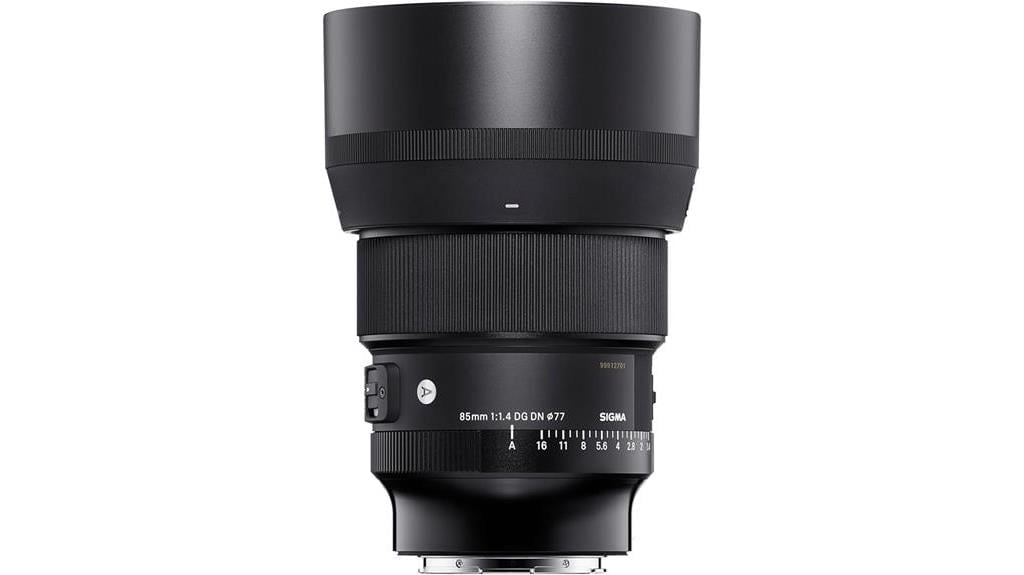
Ideal for capturing wildlife with stunning clarity and precision, the Sigma 85mm F1.4 DG DN lens for Sony A6000 stands out for its exceptional optical performance. This prime lens boasts record-high optical quality, making it a top choice for photographers looking to elevate their wildlife shots.
With a compact and lightweight design, this lens is perfect for on-the-go shooting and is built to withstand various conditions with its dust and splash-proof construction. The F1.4 aperture and 11-blade diaphragm create a soft, beautiful bokeh, ideal for isolating subjects in wildlife photography.
Whether you're capturing birds in flight or detailed close-ups of animals, the Sigma 85mm F1.4 DG DN lens delivers outstanding sharpness and image quality, ensuring your wildlife shots are truly remarkable.
Best For: Wildlife photographers looking to capture stunning and detailed shots with exceptional optical performance.
- Record-high optical quality for sharp and clear images.
- Compact and lightweight design for easy portability.
- Dust and splash-proof construction for durability in various shooting conditions.
- Higher price point compared to some competing lenses.
5. Sigma 70-200mm F2.8 DG DN OS for Sony (Best for Professionals)
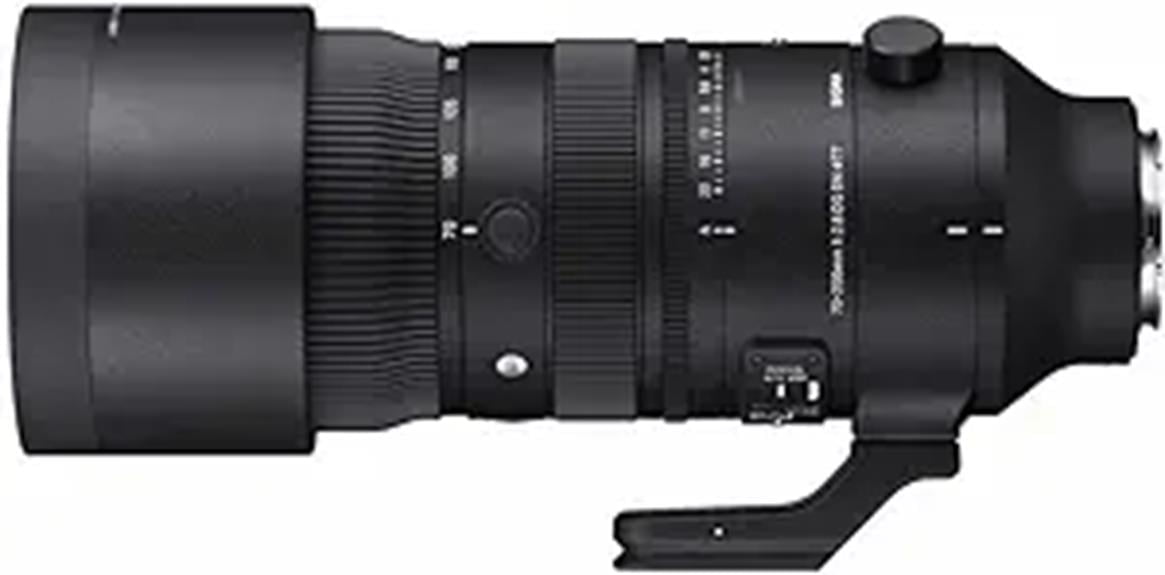
For professionals seeking exceptional image quality and precise autofocus performance, the Sigma 70-200mm F2.8 DG DN OS for Sony stands out as a top choice among the 7 best wildlife lenses for Sony A6000.
This lens, available for Sony E-mount and L-Mount cameras, features a high-response Linear Actuator AF motor, ensuring fast and accurate focusing. Its dust and splash-resistant structure, along with superior weather resistance typical of the SIGMA Sports line, make it a reliable companion in various conditions.
With solid construction, internal zoom mechanism, and an aperture ring for added control, this lens offers both durability and flexibility. Users have praised its image brightness, autofocus capabilities, and sharpness, making it a preferred option for professional wildlife photography.
Best For: Wildlife photographers and professionals seeking exceptional image quality and precise autofocus performance.
- High-response Linear Actuator AF motor for fast and accurate focusing
- Dust and splash-resistant structure with superior weather resistance
- Solid construction and internal zoom mechanism for durability and flexibility
- Weight considerations and handling may be a bit challenging for some users
6. Tamron 28-200 F/2.8-5.6 Di III RXD for Sony (Best Value)
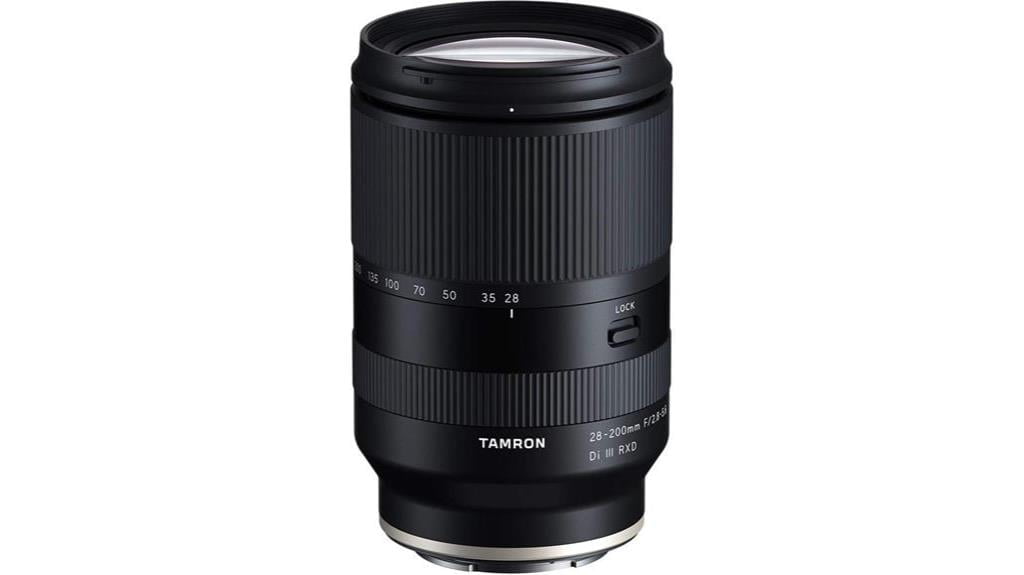
Opt for the Tamron 28-200 F/2.8-5.6 Di III RXD for Sony if you seek a versatile all-in-one zoom lens that excels in wildlife photography on your Sony A6000. This lens stands out as the world's first all-in-one zoom with a maximum aperture of F2.8 at 28mm, offering exceptional image quality and sharpness.
Its special lens elements are tailored for high-resolution digital cameras, ensuring top-notch performance. Despite its advanced features, the Tamron 28-200mm remains lightweight and compact, making it ideal for travel and daily use.
Users praise its fast aperture, excellent image quality throughout the zoom range, and weather sealing. While it may require stabilization depending on your camera body, this lens is a recommended choice for those seeking a high-quality, all-in-one solution for wildlife photography.
Best For: Photographers seeking a versatile all-in-one lens solution with exceptional portability and high-resolution image rendering capabilities.
- Versatile all-in-one zoom lens suitable for various photography applications
- Lightweight and compact design for easy travel and convenience
- Excellent image quality, sharpness, and fast autofocus performance
- Limited maximum aperture range may not be ideal for low-light or night photography
7. Sony FE 70-300mm SEL70300G F4.5-5.6 G OSS Lens (Best Compact)
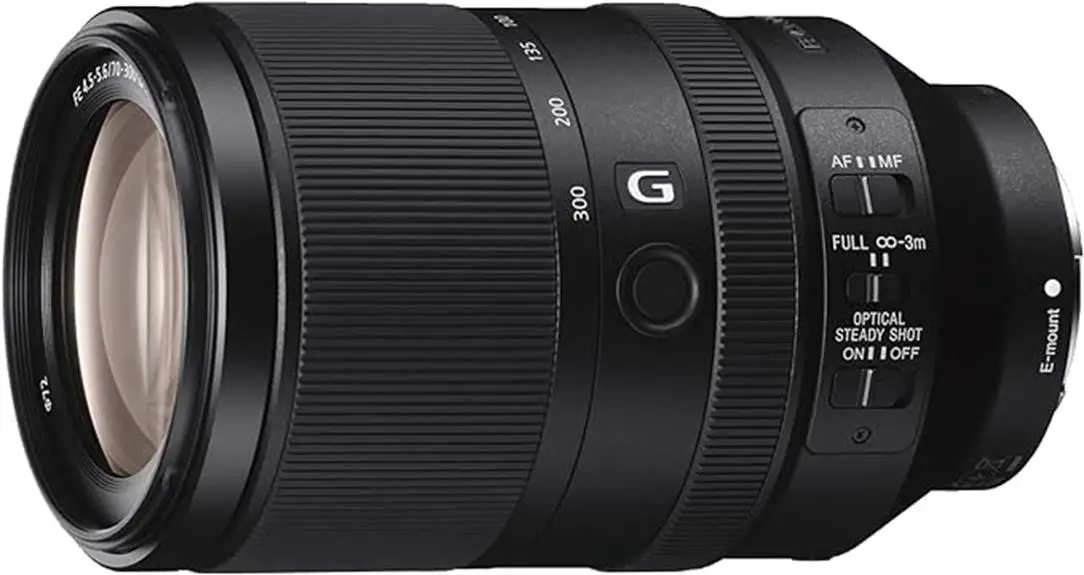
Featuring a full-frame 70-300mm G Series telephoto zoom with exceptional image quality and Optical SteadyShot, the Sony FE 70-300mm SEL70300G F4.5-5.6 G OSS Lens is a top choice for wildlife photographers using the Sony A6000.
This lens boasts a Nano AR Coating with Nano-precision structure, ensuring clear images even at full telephoto. With a 9-blade circular aperture for smooth defocus background bokeh and 2x Extra-Low Dispersion glass elements to reduce aberration, your wildlife shots will be sharp and vibrant.
The lens's linear actuator delivers fast and quiet autofocus, while direct control switches enhance operability. Optical SteadyShot stabilization is highly effective for both stills and videos. If you seek high-resolution results and versatility in your wildlife photography, this compact Sony lens is a stellar option.
Best For: Wildlife photographers looking for exceptional image quality and versatility in a compact telephoto lens.
- Exceptional image quality with sharpness even at 300mm
- Effective Optical SteadyShot image stabilization
- Fast and accurate autofocus performance
- Limitations in aperture performance in low light conditions
Things to Consider When Choosing the Best Wildlife Lens for Sony A6000
When choosing a wildlife lens for your Sony A6000, keep in mind crucial factors like lens focal length, aperture for low-light situations, image stabilization technology, autofocus performance, and the weight and size of the lens.
These aspects will greatly impact your ability to capture sharp and detailed wildlife shots, ensuring you get the best results in various shooting conditions. Consider each of these points carefully to select a lens that meets your specific wildlife photography needs and enhances your overall shooting experience.
Lens Focal Length
Choosing the right lens focal length is crucial when selecting a wildlife lens for your Sony A6000 to capture stunning close-up shots of elusive wildlife. Consider the following aspects to make an informed decision:
| Focal Length | Description |
|---|---|
| Short (Under 200mm) | Ideal for photographing birds in flight and fast-moving wildlife due to its wider field of view. |
| Medium (200-400mm) | Offers versatility for a range of wildlife shots, allowing you to capture animals from a distance. |
| Long (Over 400mm) | Perfect for close-up shots of shy or distant wildlife, providing exceptional magnification power. |
Each focal length range caters to different wildlife photography needs, so choose based on the type of wildlife you plan to capture and the level of detail you wish to achieve.
Aperture for Low-Light
To enhance your wildlife photography experience with your Sony A6000, understanding the importance of aperture for low-light situations is essential when selecting a lens. Aperture refers to the opening in the lens through which light passes.
In low-light conditions, a wider aperture (lower f-stop number) allows more light to enter the camera, enabling you to capture well-exposed images without increasing the ISO too much, which could lead to noisy photos.
Look for lenses with a wide maximum aperture like f/2.8 or lower for better performance in low-light environments. These lenses excel at letting in more light, producing clearer and sharper wildlife photos even in dimly lit settings. Consider the aperture range of a lens to ensure versatility in various lighting conditions.
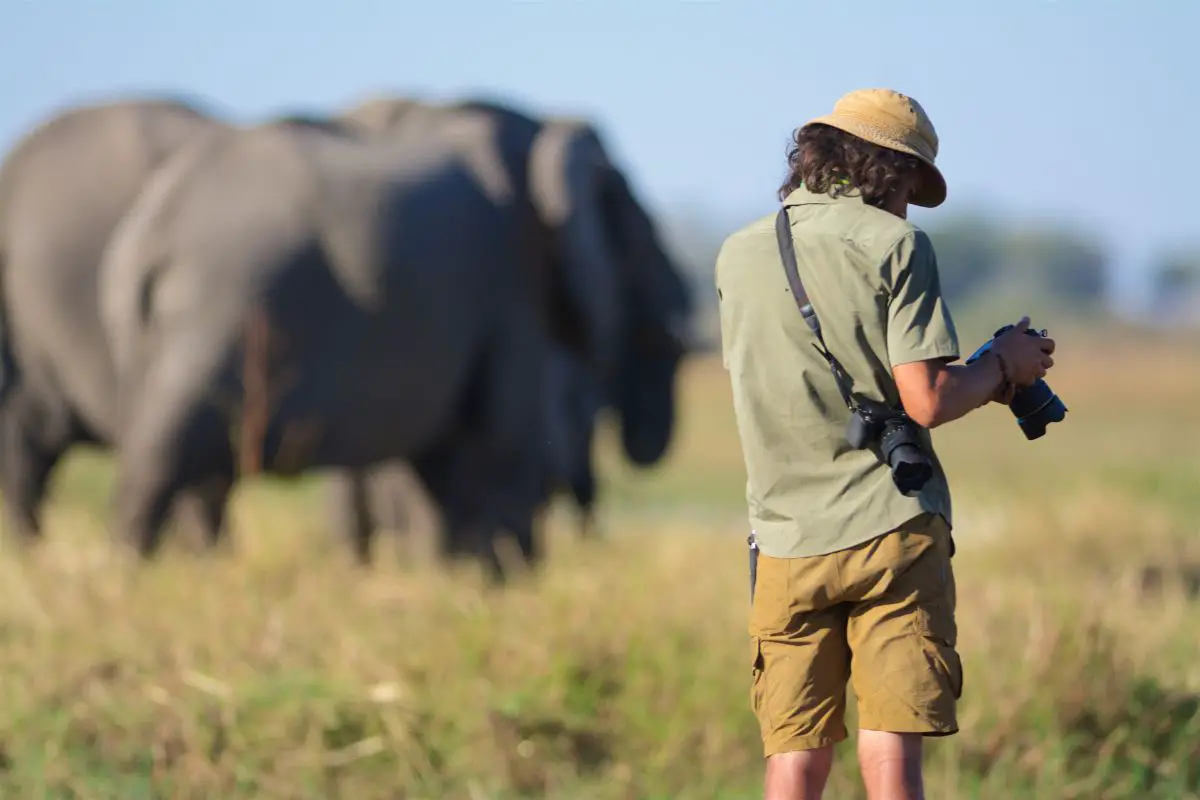
Image Stabilization Technology
Enhance your wildlife photography capabilities with the Sony A6000 by considering the advanced image stabilization technology offered in lenses designed for capturing dynamic wildlife shots. Image stabilization technology helps counteract camera shake, resulting in sharper images, especially when shooting handheld or in low light conditions.
With stabilized lenses, you can achieve clearer photos at slower shutter speeds, crucial for wildlife photography where unexpected movements are common. This technology is essential for reducing blur caused by minor hand movements, allowing you to focus on capturing the perfect moment without worrying about image quality.
When choosing a wildlife lens for your Sony A6000, opt for one with reliable image stabilization to improve the sharpness and clarity of your wildlife shots.
Autofocus Performance
Consider the autofocus performance as a key factor when selecting a wildlife lens for your Sony A6000, ensuring quick and accurate focusing on fast-moving subjects in dynamic wildlife settings. Look for lenses with fast and precise autofocus motors, like linear motors or ultrasonic motors, for swift subject tracking.
Features such as eye autofocus and object tracking can be beneficial for capturing wildlife in motion. Additionally, a lens with a customizable autofocus range limiter can help optimize focusing speed for specific distances common in wildlife photography.
When choosing a lens, pay attention to the autofocus speed, accuracy, and versatility to ensure you can consistently capture sharp and in-focus shots of wildlife on your Sony A6000.
Lens Weight and Size
When selecting a wildlife lens for your Sony A6000, take into account the weight and size to ensure comfortable handling and mobility while shooting in dynamic wildlife environments.
- Weight: Opt for a lens that balances well with your camera body to prevent strain during extended shooting sessions.
- Size: Consider the physical dimensions of the lens to ensure it fits well in your hand and provides stability for capturing sharp images.
- Portability: Choose a compact and lightweight lens for easy transportation during outdoor expeditions.
- Balance: Aim for a lens that maintains a good balance between weight, size, and performance to enhance your overall shooting experience.
Final Words
The Wildlife Lens for Sony A6000 offers unparalleled clarity and precision for capturing the beauty of nature in every shot. When you invest in this lens, you are investing in quality. Its lightweight construction and compact design make it ideal for outdoor adventures.
The advanced autofocus system ensures you never miss a moment, even with fast-moving subjects. The image stabilization feature guarantees sharp images, even in challenging lighting conditions.
With a versatile focal length range, you can frame your shots perfectly, whether you're capturing a distant bird in flight or a close-up of a small creature. Make the most of your wildlife photography with this exceptional lens.
| Feature | Description | Benefit |
|---|---|---|
| Lightweight Design | Easy to carry on long hikes | Capture wildlife comfortably |
| Advanced Autofocus | Quick and precise focusing | Never miss a crucial moment |
| Image Stabilization | Sharp images in low light | Crisp photos even in challenging conditions |
| Versatile Focal Length | Ideal for various wildlife photography styles | Adapt to different shooting situations |
